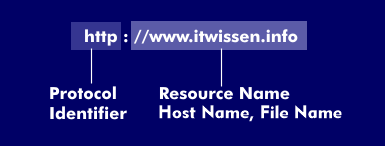uniform resource locator (Internet) (URL)
Uniform Resource Locator (URL) is an addressing form for Internet addresses, which is mainly used within the World Wide Web(WWW). The URL format makes a unique designation of all documents on the Internet possible; it describes the Internet address of a document or object that can be read by a Web browser.
A URL consists of two parts: the Protocol Identifier( PID) and the Resource Name, separated by a colon and two slashes (://).
The Protocol Identifier identifies the protocol used to fetch the service, for example, Gopher, Hypertext Transfer Protocol( HTTP), File Transfer Protocol( FTP), News, and so on.
The Resource Name is the complete address of the resource that contains the information. It includes the domain name and the path on the computer. The Resource Name can include the following components: The host identifier, the file name, the port number and the reference. Many protocols require the host name and file name, while the port number and reference are optional.
The Internet address is part of the link and is interpreted by the client to allow it to connect to the appropriate server. In the Domain Name System( DNS), URLs consist of three or more parts. These are the host name or service (www, ftp), the second level domain( SLD), for example the company name Unilever, and the top level domain( TLD), which can be the country domain or the generic top level domain( gTLD). The Uniform Resource Locator (URL) is also referred to synonymously as Uniform Resource Identifier( URI) and is described under RFCs 1738 and 1808 from 1995.

